Entry Database : PDB / ID : 2m3mTitle Solution structure of a complex consisting of hDlg/SAP-97 residues 318-406 and HPV51 oncoprotein E6 residues 141-151 Disks large homolog 1 Protein E6 Keywords / / / / / / / / / / / / / / Function / homology Function Domain/homology Component
/ / / / / / / / / / / / / / / / / / / / / / / / / / / / / / / / / / / / / / / / / / / / / / / / / / / / / / / / / / / / / / / / / / / / / / / / / / / / / / / / / / / / / / / / / / / / / / / / / / / / / / / / / / / / / / / / / / / / / / / / / / / / / / / / / / / / / / / / / / / / / / / / / / / / / / / / / / Biological species Homo sapiens (human)Method / Model details lowest energy, model1 Authors Mischo, A. / Ohlenschlager, O. / Gorlach, M. Journal : Plos One / Year : 2013Title : Structural insights into a wildtype domain of the oncoprotein E6 and its interaction with a PDZ domain.Authors : Mischo, A. / Ohlenschlager, O. / Hortschansky, P. / Ramachandran, R. / Gorlach, M. History Deposition Jan 22, 2013 Deposition site / Processing site Revision 1.0 May 15, 2013 Provider / Type Revision 2.0 Dec 25, 2019 Group Data collection / Database references ... Data collection / Database references / Derived calculations / Polymer sequence Category entity_poly / pdbx_nmr_software ... entity_poly / pdbx_nmr_software / pdbx_nmr_spectrometer / pdbx_struct_mod_residue / struct_conn / struct_ref_seq_dif Item _entity_poly.pdbx_seq_one_letter_code_can / _pdbx_nmr_software.name ... _entity_poly.pdbx_seq_one_letter_code_can / _pdbx_nmr_software.name / _pdbx_nmr_spectrometer.model / _pdbx_struct_mod_residue.parent_comp_id / _struct_conn.pdbx_leaving_atom_flag Revision 2.1 Jun 14, 2023 Group / Other / Category / pdbx_database_statusItem / _database_2.pdbx_database_accession / _pdbx_database_status.status_code_nmr_dataRevision 2.2 Nov 20, 2024 Group / Database references / Structure summaryCategory chem_comp_atom / chem_comp_bond ... chem_comp_atom / chem_comp_bond / database_2 / pdbx_entry_details / pdbx_modification_feature Item
Show all Show less
 Yorodumi
Yorodumi Open data
Open data Basic information
Basic information Components
Components Keywords
Keywords Function and homology information
Function and homology information Homo sapiens (human)
Homo sapiens (human)
 Human papillomavirus
Human papillomavirus Authors
Authors Citation
Citation Journal: Plos One / Year: 2013
Journal: Plos One / Year: 2013 Structure visualization
Structure visualization Molmil
Molmil Jmol/JSmol
Jmol/JSmol Downloads & links
Downloads & links Download
Download 2m3m.cif.gz
2m3m.cif.gz PDBx/mmCIF format
PDBx/mmCIF format pdb2m3m.ent.gz
pdb2m3m.ent.gz PDB format
PDB format 2m3m.json.gz
2m3m.json.gz PDBx/mmJSON format
PDBx/mmJSON format Other downloads
Other downloads 2m3m_validation.pdf.gz
2m3m_validation.pdf.gz wwPDB validaton report
wwPDB validaton report 2m3m_full_validation.pdf.gz
2m3m_full_validation.pdf.gz 2m3m_validation.xml.gz
2m3m_validation.xml.gz 2m3m_validation.cif.gz
2m3m_validation.cif.gz https://data.pdbj.org/pub/pdb/validation_reports/m3/2m3m
https://data.pdbj.org/pub/pdb/validation_reports/m3/2m3m ftp://data.pdbj.org/pub/pdb/validation_reports/m3/2m3m
ftp://data.pdbj.org/pub/pdb/validation_reports/m3/2m3m
 Links
Links Assembly
Assembly
 Components
Components Homo sapiens (human) / Gene: DLG1 / Production host:
Homo sapiens (human) / Gene: DLG1 / Production host: 

 Human papillomavirus / Strain: TYPE 51 / Gene: E6 / Production host:
Human papillomavirus / Strain: TYPE 51 / Gene: E6 / Production host: 
 Sample preparation
Sample preparation Processing
Processing Movie
Movie Controller
Controller


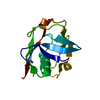
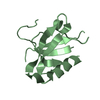
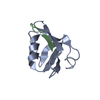
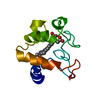
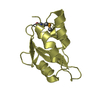
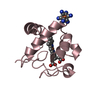
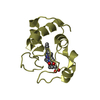
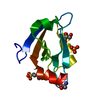
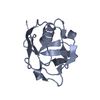

 PDBj
PDBj









 HSQC
HSQC